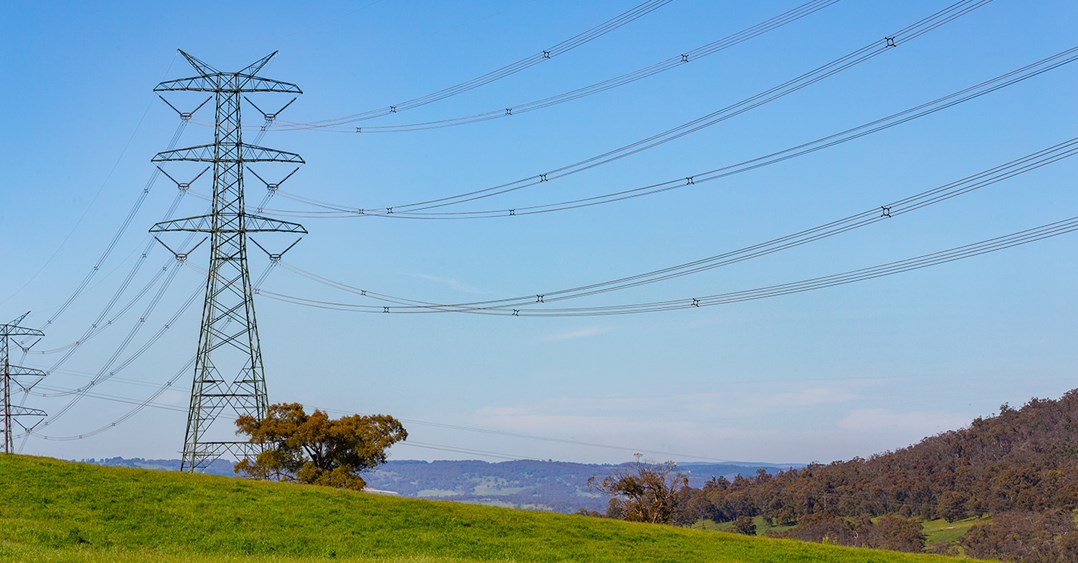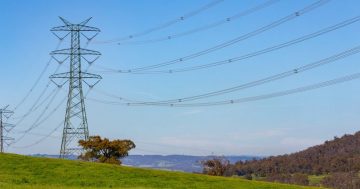
Michael Katz: “A modern electricity grid that maximises benefits for communities and households should not be based on old, dangerous and inefficient tower technology but go underground”. Photo: HumeLink.
Residents from communities spanning from Wagga to the edge of Sydney have welcomed the NSW Government’s recognition that high voltage powerlines significantly impact regional communities, but rejected its proposed compensation package, seeing it as a Band-Aid solution to a much bigger environmental and social issue.
This comes in the wake of the NSW Government’s announcement that landholders will receive a $200,000 per kilometre payment, paid over 20 years, for all new large-scale transmission lines built on their properties.
This payment, applying to new transmission lines, will be in addition to existing statutory compensation payments made under the Just Terms Act.
The new Strategic Benefit Payments Scheme, paid out in annual instalments to farmers over 20 years, indexed to CPI, is designed to support the rollout of a modern electricity grid.
Deputy Premier and Minister for Regional NSW Paul Toole said the scheme was the first of its kind in Australia and recognised the NSW Government’s commitment to building a modern electricity grid that maximises benefits for communities and households.
“Building new transmission infrastructure is critical to connecting renewable energy sources to the grid and most of this new infrastructure will be built in regional NSW,” Mr Toole said.
“Supporting landowners and regional communities who host this infrastructure will help us build the network we need in time to ensure energy security, supply and affordability for families across NSW.”
The scheme will apply for new major transmission projects critical to the energy transformation and future security of the energy grid, including the Central-West Orana Transmission Project, Project EnergyConnect, HumeLink, the New England Transmission Project and the Hunter Transmission Project.

Underground cable routing Spanish electricity to the French network in the Pyrenees. Photo: Euractiv.
HumeLink is a proposed 360-kilometre, 500-kilovolt transmission line that will connect Wagga Wagga, Bannaby and Maragle.
But Michael Katz, a member of HomeLink Alliance which recently joined with HumeLink Action Group to run the Stop, Rethink HumeLink Towers campaign, has urged the Government to consider not only better compensation, but also the best possible way to transmit energy without the environmental, visual, social and bushfire risks associated with building massive new transmission towers across hundreds of kilometres of rural land, state forests and national parks.
Mr Katz said that to truly match the Government’s commitment to build, “a modern electricity grid that maximises benefits for communities and households”, it should not be based on old, dangerous and inefficient tower technology but go underground.
“Green energy must be about the end-to-end delivery of power to consumers, not just generation,” Mr Katz said.
“The reality is that today’s compensation announcement is in effect a subsidy for Transgrid – a foreign-owned company – to destroy 2500 hectares of land between Wagga Wagga and the Snowy Mountains to the start of the Southern Highlands.”
He congratulated the NSW Government for their ambitious renewable energy policy, needed to replace the state’s ageing coal-fired power stations and build a clean energy future for NSW but urged them to look at underground transmission as they recently announced they will in Victoria, with Federal Government funding support, for the Marinus Link project.
“In many other jurisdictions, such as Europe and California, they are doing away with high voltage overhead transmission lines, in favour of undergrounding – a solution which does not require large scale clear-felling of large tracts of bushland that will leave a permanent scar on the landscape, has less impacts on endangered habitat and mental health, will not contribute to – or impede the fighting of – bushfires, nor disrupt farming practices,” Mr Katz said.
Mr Katz said true green energy transmission must have minimal impact on the environment. In the case of HumeLink, replacing trees with 85-metre carbon-intensive steel poles is not very green in most people’s thinking.
“We need Stop, Rethink HumeLink, so people don’t look back in the future and question why we damaged the environment and contributed to the loss of many of our rare and endangered Australian species in order to deliver more environmentally-friendly energy,” he said.
In last night’s Budget, the Government announced it will establish a $20 billion fund for energy transmission by backing projects including investments connecting offshore windfarms in Victoria, and Tasmania’s Marinus Link project.
An underground feasibility study for Humelink is being finalised.








